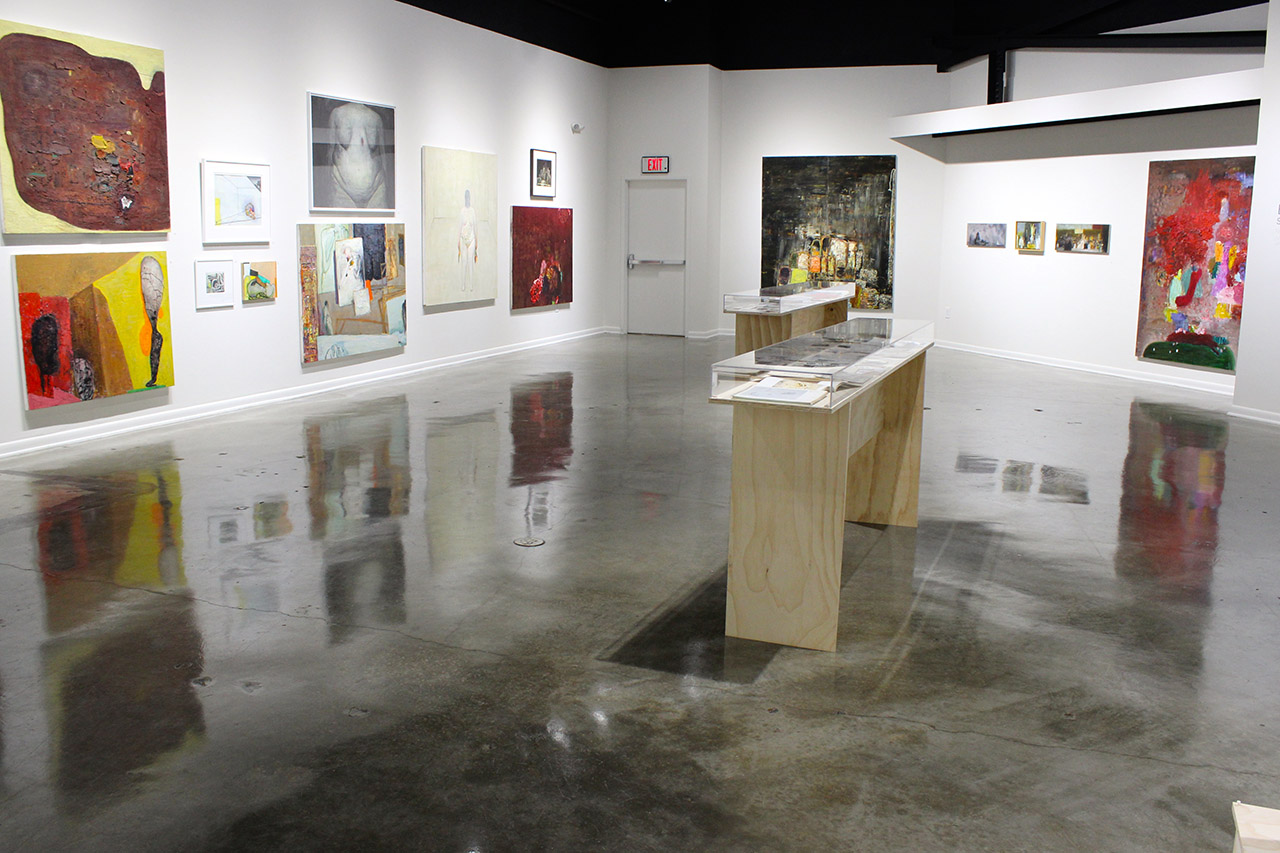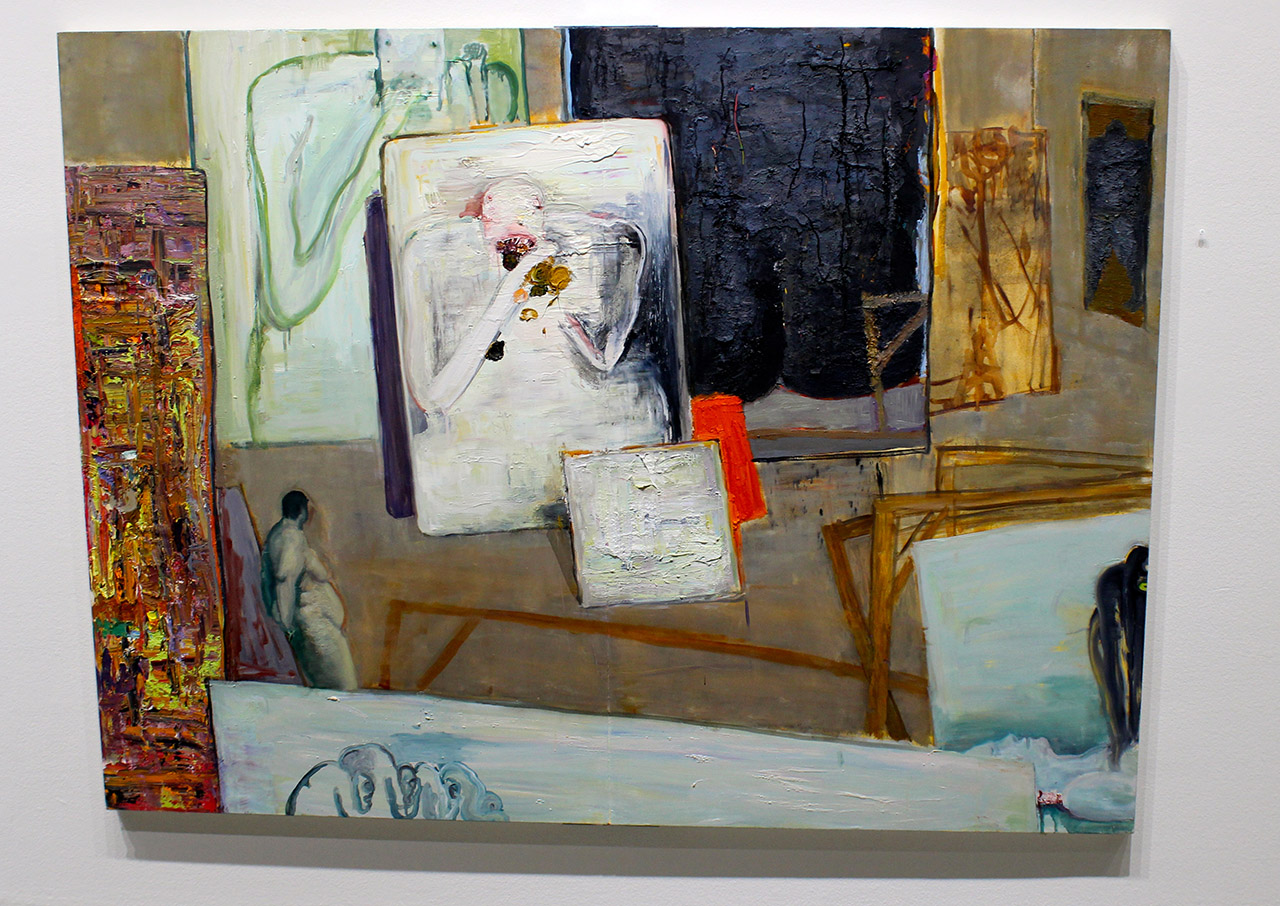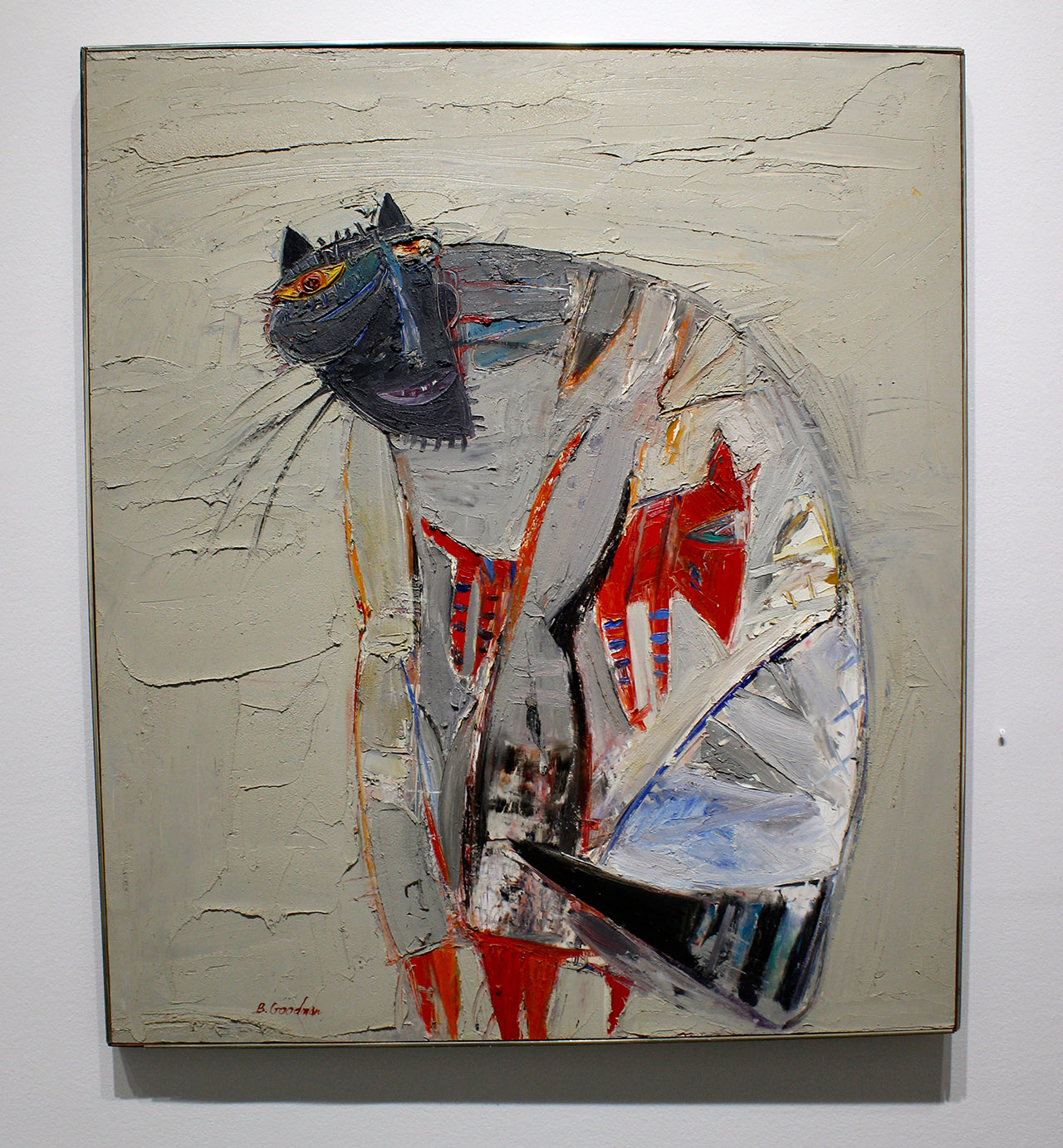
Twin retrospectives mark a triumphant homecoming for Detroit painter Brenda Goodman
Photo: “Brenda Goodman: Selected Work 1961-2015” at Center Galleries. Photos by Rosie Sharp.
Painter Brenda Goodman was part of Detroit’s Cass Corridor art movement, which arose in the counterculture context of the 1960s and 1970s and found an audience and group of avid contributors on local campuses. One of those campuses was the College for Creative Studies (then known as the Detroit Society of Arts and Crafts), which received a Knight Arts grant of more than $1 million in 2009 aimed at buoying both the institution and the city’s proposed Creative Corridor.
On the strength of her extraordinary painting, which has always drawn on a wellspring of personal emotion and self-expression, Goodman left Detroit for New York, where she has enjoyed a long and varied career as an artist and educator. But last month marked an important homecoming for this native daughter, as twin retrospectives in the Motor City celebrated five decades of her intense creative output.

“Self Portrait 20,” 2005. This poignant self-portrait shows Goodman viewing her earlier works of self-portraiture.
The first, at Center Galleries on the College for Creative Studies campus, focuses largely on her painted work, with a few sculptural pieces, a vitrine full of catalogs and other ephemera included for good measure. “Brenda Goodman: Selected Work 1961-2015” is astonishing in its scope, especially when one realizes that it represents only a fraction of her output as a painter. The Center Galleries’ main exhibition room practically zings with the color and chaos of her images.
“Brenda and her female Cass Corridor compatriots, Nancy Mitchnick and Ellen Phelan, were tough–tougher than most because they had to stand up to the machismo of their male corridor colleagues,” says Michelle Perron, who curated the exhibit. “But Brenda was the one who made formidable work that at the same time laid bare her vulnerabilities. She put herself on the canvas in such a way that the viewer has no choice but to have a viscerous experience. One can’t meet a Goodman painting without meeting Brenda head-on.”
Indeed, Goodman has two major series of works of self-portraiture that deal uncompromisingly with periods of self-loathing surrounding her weight and body image. “I paint from the dark side because I’ve let myself go there, and in more recent years more from a lighter place,” says Goodman. “But when life intervenes—like when my partner’s son died of cancer in 2009–it changed her life, and mine, too. The series ‘Troubled Waters’ was the way I coped with that.”

“Self Portrait 4,” 1994.
Many of her works carry the weight of emotion, but there are moments of levity bracketing this heaviness, as with an early work, “Cat” (1970), and the most recent works in the show, “Feeling My Way Out” (2014) and “Euff” (2015). The latter seem to indicate, in both content, feel and surface quality, that Goodman is finding her peace.
Surfaces are a major factor in Goodman’s work, something that is immediately noticeable in the second show, “Brenda Goodman: A Life on Paper,” at Paul Kotula Projects in Ferndale, Mich. Focusing on a multitude of works on paper, the show successfully captures not only Goodman’s intense dedication to her craft and constant use of it to deal with her day-to-day living, but also the variance of her application techniques. She sometimes piles her surfaces high with squeezed piles of paint, and sometimes applies lighter, moody washes of watercolor. “Different kinds of surfaces have been an important part of my painting from the time I started art school in 1961,” says Goodman. “For me, the more tools I use, and the more techniques I have developed, the more ways I can express the emotions I want to convey.”

Paul Kotula and Brenda Goodman at Paul Kotula Projects on opening night.
There are certainly an abundance of emotions on display, and enough food for thought between these two shows for a novel on intuitive painting and uncompromising self-expression as a feminist practice. While Goodman does not explicitly identify as such, her dedication to speaking her truth and following her own path, personally and professionally, is a model of third-wave feminism. This thread of self-expression is really just another way her work is prescient, and it is heartening to see such a talented hometown hero and audacious figure get her due.
“Brenda Goodman: Selected Work 1961-2015” (Center Galleries, College for Creative Studies, 301 Frederick St., Detroit) and “Brenda Goodman: A Life on Paper” (Paul Kotula Projects, 23255 Woodward Ave., Ferndale) both run through Dec. 19.
Recent Content
-
Artsarticle ·
-
Artsarticle ·
-
Artsarticle ·
